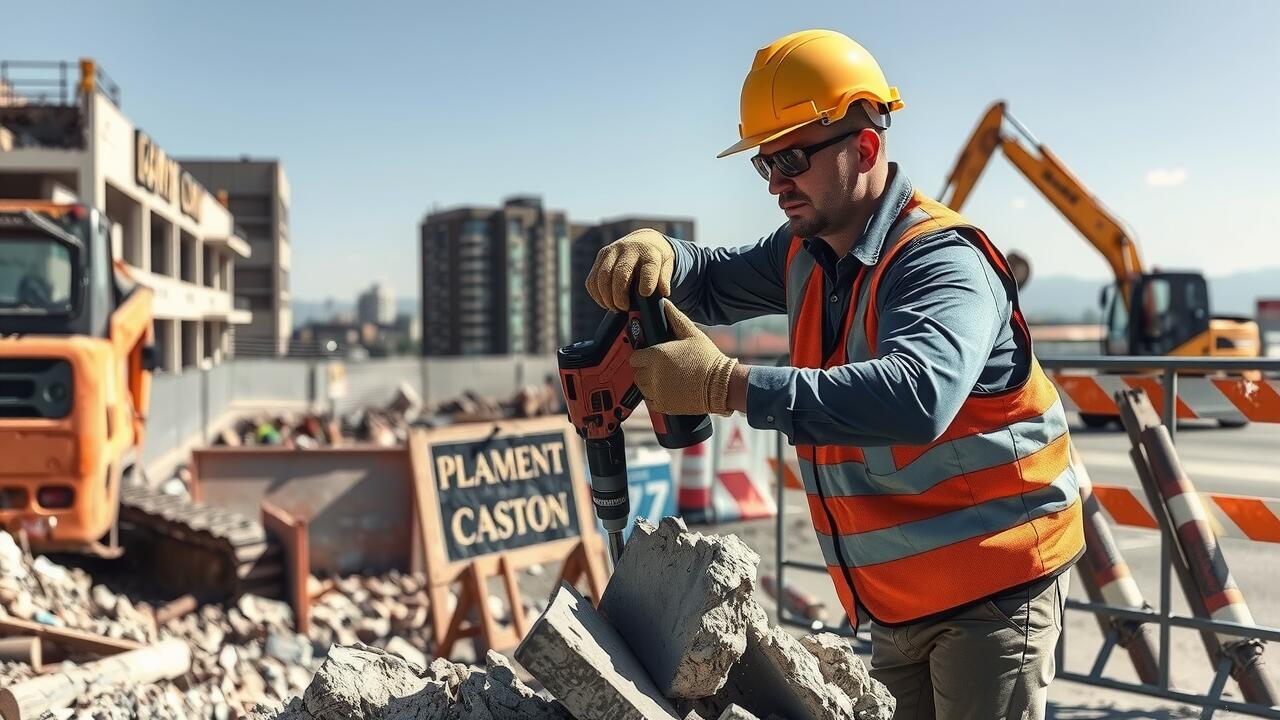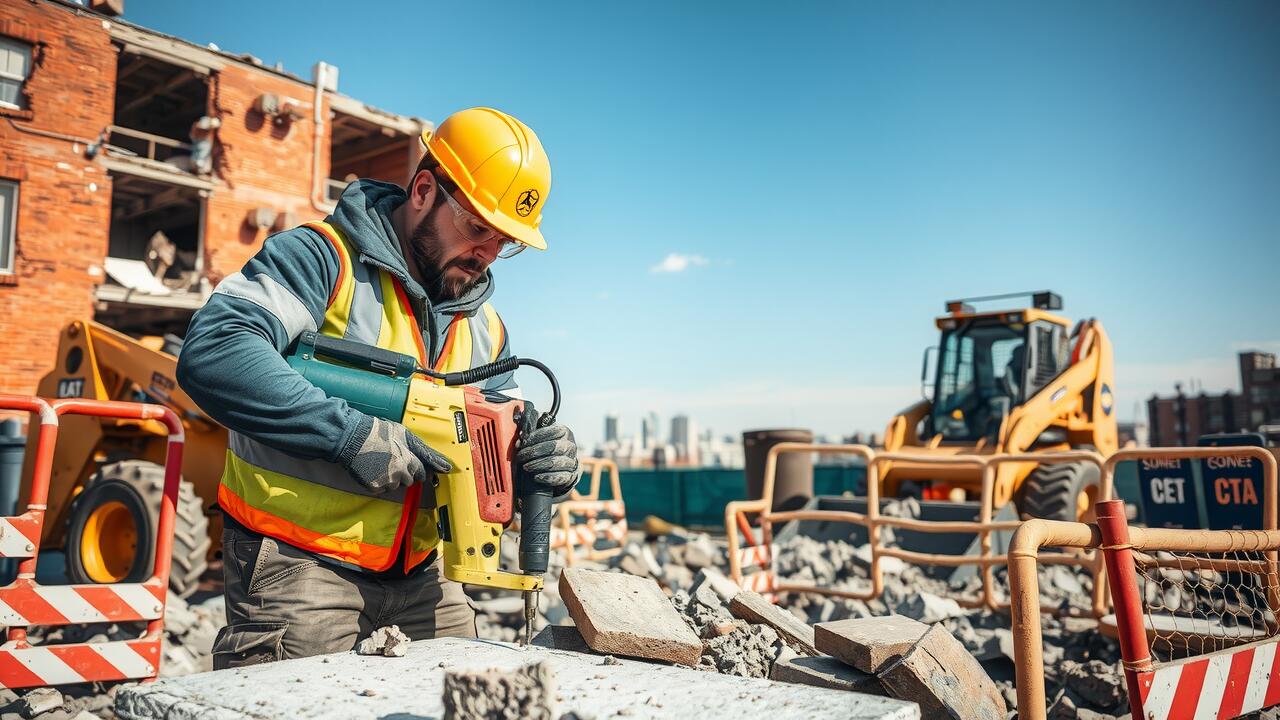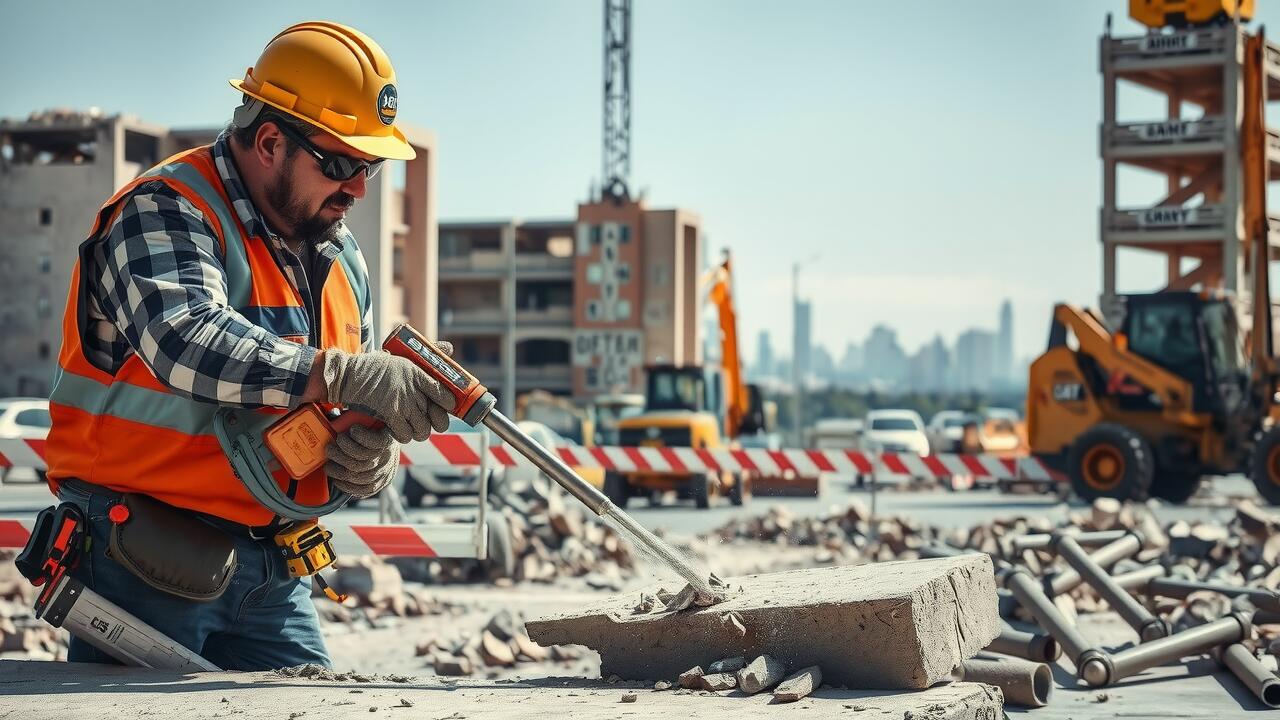
Table Of Contents
Safe Use of Tools and Equipment
When engaging in concrete demolition, proper handling of tools and equipment is crucial for ensuring a safe work environment. Personal protective equipment (PPE) such as hard hats, gloves, and steel-toed boots should always be worn. Equipment like jackhammers and saws must be inspected before use to confirm they are in good working condition. Adequate training on how to operate these tools properly can greatly reduce the risk of accidents and injuries on the job site.
In addition to using tools safely, maintenance routines should be established to keep machinery in optimal condition. Regular checks for wear and tear on equipment can prevent malfunctions, which could lead to hazardous situations during concrete demolition. Ensuring all employees understand the importance of reporting any equipment issues promptly can maintain safety standards throughout the project. Always observe caution when using power tools, as distractions can lead to serious mishaps.
Best Practices for Handling Heavy Machinery
Handling heavy machinery during concrete demolition requires attention to detail and adherence to safety protocols. Operators must undergo proper training to ensure they understand the equipment’s functions and limitations. Familiarity with the specific machine being operated promotes efficiency and reduces the risk of accidents. Regular maintenance checks should be conducted to identify any mechanical issues before starting work. This proactive approach minimizes downtime and enhances overall safety on the job site.
Additionally, wearing suitable personal protective equipment (PPE) is crucial when operating heavy machinery. Hard hats, safety goggles, and steel-toed boots provide necessary protection against potential hazards. Maintaining a clear communication system among crew members ensures everyone is aware of the machinery’s movements. Establishing a designated area for pedestrian traffic can further prevent accidents during concrete demolition. Adhering to these best practices fosters a safer working environment and boosts overall project efficiency.
Disposal of Debris
Proper disposal of debris is a critical component of any concrete demolition project. It is essential to familiarize yourself with local regulations regarding construction waste. Many jurisdictions have specific guidelines that dictate how concrete, steel rebar, and other materials must be disposed of or recycled. Ignoring these rules can result in fines or project delays. Therefore, having a plan in place that addresses the collection and disposal of waste materials is crucial for compliance and efficiency.
Choosing environmentally responsible removal techniques can significantly benefit both the project and the surrounding community. Recycling concrete not only reduces landfill waste but also allows for the materials to be repurposed in new construction projects. Partnering with specialized waste management companies can streamline the process. They can provide containers for debris and arrange for transportation to recycling facilities. This approach enhances sustainability while supporting safe practices in concrete demolition.
Environmentally Responsible Removal Techniques
When planning a concrete demolition project, it is crucial to consider environmentally responsible removal techniques. One effective method is recycling the material generated from the demolition process. Concrete can be crushed and repurposed for various applications, such as road base or aggregate in new concrete mixtures. This approach reduces waste and minimizes the need for new raw materials, ultimately lowering the project’s carbon footprint.
Another strategy involves careful separation of reusable materials. During concrete demolition, salvaging items like rebar, bricks, and fixtures prevents them from ending up in landfills. Proper sorting allows these materials to be redirected to recycling facilities, enhancing sustainability efforts. Implementing these techniques not only benefits the environment but also promotes a circular economy within the construction industry.
Emergency Preparedness
Emergency preparedness is vital in any concrete demolition project. It’s essential to identify potential hazards associated with the work environment and establish a robust response plan. All team members should be trained to recognize risks related to falling debris, equipment malfunction, and possible injuries. Regular safety drills can help ensure that everyone knows their roles in case of an emergency.
First aid kits must be readily available on-site along with a designated first aid responder. Crew members should be familiar with basic first aid procedures and have access to contact numbers for emergency services. Having an effective communication system in place is critical for quickly addressing any incidents that occur during concrete demolition operations. This preparation not only enhances safety but also fosters a culture of vigilance on the job site.
Establishing Response Plans and First Aid
Establishing a comprehensive response plan for concrete demolition projects is crucial for ensuring the safety of your team. This plan should include clear roles and responsibilities for each team member, detailing who will take charge in case of an emergency. Communication protocols must be established to ensure everyone can report incidents quickly and effectively. Regular drills can help team members familiarize themselves with the plan, ultimately improving response times during actual emergencies.
First aid kits should be readily available and stocked with essential supplies specifically for concrete demolition hazards. Training team members in basic first aid and CPR is vital; this empowers them to assist injured workers promptly. Having designated first aid responders on-site can enhance the overall safety of the project. Additionally, ensure that emergency contact numbers are posted prominently and accessible to all workers, allowing for quick access to medical assistance when needed.
FAQS
What safety gear should I wear during a concrete demolition project?
It is essential to wear personal protective equipment (PPE) such as safety goggles, hard hats, gloves, steel-toed boots, and hearing protection to safeguard against potential hazards.
How can I ensure the safe use of heavy machinery on-site?
Always undergo proper training before operating heavy machinery. Conduct pre-operation inspections, maintain clear communication with your team, and follow manufacturer guidelines for safe operation.
What are the best practices for disposing of debris after demolition?
Debris should be sorted into recyclable and non-recyclable materials. Use appropriate containers for disposal and adhere to local regulations regarding waste disposal to minimize environmental impact.
Are there environmentally responsible techniques for removing concrete?
Yes, techniques such as recycling concrete into aggregate for new construction, using hydraulic tools that reduce noise pollution, and minimizing dust through wet demolition methods are environmentally friendly options.
How should I prepare for emergencies during a concrete demolition project?
Establish a clear emergency response plan that includes evacuation routes, communication protocols, and first aid procedures. Ensure all workers are familiar with the plan and have access to first aid kits and emergency contacts.

